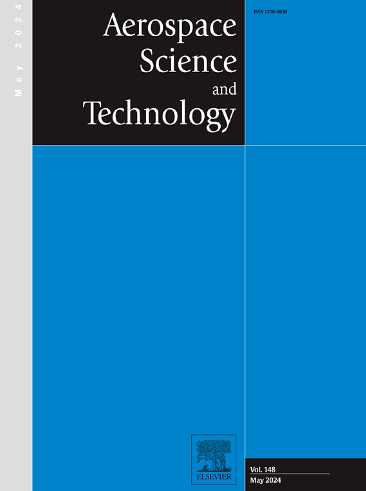Assessing turbulence model budgets in supersonic rectangular jets using large Eddy simulations
IF 5
1区 工程技术
Q1 ENGINEERING, AEROSPACE
引用次数: 0
Abstract
This work aims to identify the sources of inaccuracies in Reynolds Averaged Navier-Stokes (RANS) and discuss the areas of improvements to enhance the predictions rectangular supersonic jets using LES, particularly for potential core lengths, jet mixing, and turbulence anisotropy. Budgets are analyzed for Turbulent kinetic energy (TKE) and Reynolds stress in various RANS models for a non-axisymmetric supersonic jet using well-validated Large Eddy Simulations (LES) as reference database. Examined RANS closures include Boussinesq (BSQ) Shear Stress Transport (SST), quadratic SST (QCR), and Reynolds stress model (RSM). A term-to-term comparison of Turbulent Kinetic Energy (TKE) and Reynolds stress budgets between RANS and LES is presented. In two-equation RANS, production in the shear layer is balanced by dissipation, with minimal diffusion. Thus, the diffusion along the jet centerline in RANS is delayed, resulting in slower mixing and longer potential cores. Although QCR accounts for the Reynolds stress anisotropy, it does not bring significant improvement to the TKE budget, suggesting that TKE transport remains minimally affected by the constitutive relation. RSM reproduces Reynolds stress budget trends, for production and pressure strain acting as source and sink respectively. However, the reduction in pressure strain correlation with increasing convective Mach number, is not predicted well. Primary areas for RANS improvement are identified, emphasizing the need to move beyond linear RANS, towards directly capturing the stress-strain relationship.
求助全文
约1分钟内获得全文
求助全文
来源期刊

Aerospace Science and Technology
工程技术-工程:宇航
CiteScore
10.30
自引率
28.60%
发文量
654
审稿时长
54 days
期刊介绍:
Aerospace Science and Technology publishes articles of outstanding scientific quality. Each article is reviewed by two referees. The journal welcomes papers from a wide range of countries. This journal publishes original papers, review articles and short communications related to all fields of aerospace research, fundamental and applied, potential applications of which are clearly related to:
• The design and the manufacture of aircraft, helicopters, missiles, launchers and satellites
• The control of their environment
• The study of various systems they are involved in, as supports or as targets.
Authors are invited to submit papers on new advances in the following topics to aerospace applications:
• Fluid dynamics
• Energetics and propulsion
• Materials and structures
• Flight mechanics
• Navigation, guidance and control
• Acoustics
• Optics
• Electromagnetism and radar
• Signal and image processing
• Information processing
• Data fusion
• Decision aid
• Human behaviour
• Robotics and intelligent systems
• Complex system engineering.
Etc.
 求助内容:
求助内容: 应助结果提醒方式:
应助结果提醒方式:


